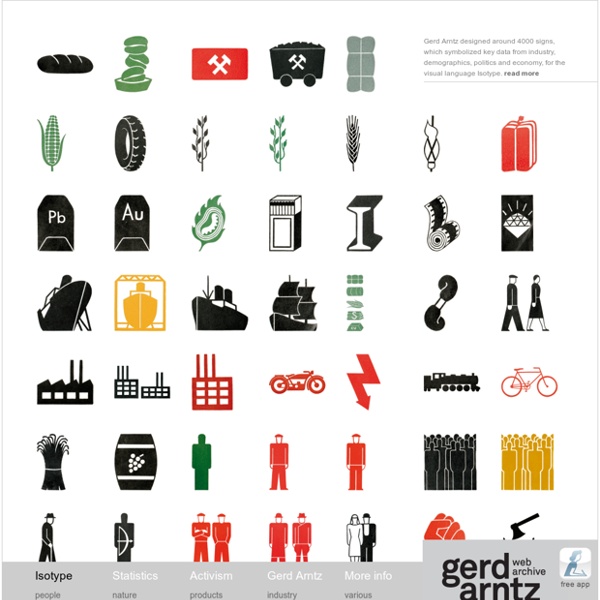



Hoboglyphs: Secret Transient Symbols & Modern Nomad Codes this is onformative a studio for generative design. 37 tools It's often said that data is the new world currency, and the web is the exchange bureau through which it's traded. As consumers, we're positively swimming in data; it's everywhere from labels on food packaging design to World Health Organisation reports. As a result, for the designer it's becoming increasingly difficult to present data in a way that stands out from the mass of competing data streams. Get Adobe Creative Cloud One of the best ways to get your message across is to use a visualization to quickly draw attention to the key messages, and by presenting data visually it's also possible to uncover surprising patterns and observations that wouldn't be apparent from looking at stats alone. As author, data journalist and information designer David McCandless said in his TED talk: "By visualizing information, we turn it into a landscape that you can explore with your eyes, a sort of information map. There are many different ways of telling a story, but everything starts with an idea.
Symbol Signs The complete set of 50 passenger/pedestrian symbols developed by AIGA is available for all to use, free of charge. Signs are available here in EPS and GIF formats. Additional symbol signs are available free of charge at The Noun Project. Download the complete set of Symbol Signs (ZIP archive, 377 KB) About the symbol signs This system of 50 symbol signs was designed for use at the crossroads of modern life: in airports and other transportation hubs and at large international events. Prior to this effort, numerous international, national and local organizations had devised symbols to guide passengers and pedestrians through transportation facilities and other sites of international exchange. To develop such a system, AIGA and DOT. compiled an inventory of symbol systems that had been used in various locations worldwide, from airports and train stations to the Olympic Games. AIGA Signs and Symbols Committee members: Thomas Geismar Seymour Chwast Rudolph de Harak John Lees Massimo Vignelli
Brainforest Brainforest is the name of a piece by Gerda Steiner & Jorg Lenzlinger but I think it’s also a great way of describing the style that all of their work has. Steiner was originally a wall painter and Lenzlinger was creating stalactite-like forms when they joined forces in 1997. The amount of detail in their large scale installations is staggering. You can tell how much I love their work by the number of images I have included in this post.
Mysterious number 6174 March 2006 Anyone can uncover the mystery The number 6174 is a really mysterious number. Kaprekar's operation In 1949 the mathematician D. It is a simple operation, but Kaprekar discovered it led to a surprising result. When we reach 6174 the operation repeats itself, returning 6174 every time. We reached 6174 again! A very mysterious number... When we started with 2005 the process reached 6174 in seven steps, and for 1789 in three steps. Only 6174? The digits of any four digit number can be arranged into a maximum number by putting the digits in descending order, and a minimum number by putting them in ascending order. 9 ≥ a ≥ b ≥ c ≥ d ≥ 0 and a, b, c, d are not all the same digit, the maximum number is abcd and the minimum is dcba. We can calculate the result of Kaprekar's operation using the standard method of subtraction applied to each column of this problem: which gives the relations for those numbers where a>b>c>d. For three digit numbers the same phenomenon occurs. How fast to 6174? and
FlowingData | Visualization and Statistics The Magic and Logic of Color: How Josef Albers Revolutionized Visual Culture and the Art of Seeing by Maria Popova “A thing is never seen as it really is.” “Hundreds of people can talk, for one who can think,” John Ruskin wrote, “but thousands of people can think, for one who can see.” “We see, but we do not see: we use our eyes, but our gaze is glancing, frivolously considering its object,” Alexandra Horowitz lamented in her sublime meditation on looking. Hardly anyone has accomplished more in revolutionizing the art of seeing than German-born American artist, poet, printmaker, and educator Josef Albers, as celebrated for his iconic abstract paintings as he was for his vibrant wit and spellbinding presence as a classroom performer. Albers, who headed the legendary Black Mountain College that shaped such luminaries as Zen composer John Cage and reconstructionist Ruth Asawa, lays out the book’s beautifully fulfilled and timeless promise in the original introduction: In visual perception a color is almost never seen as it really is — as it physically is. Donating = Loving Share on Tumblr